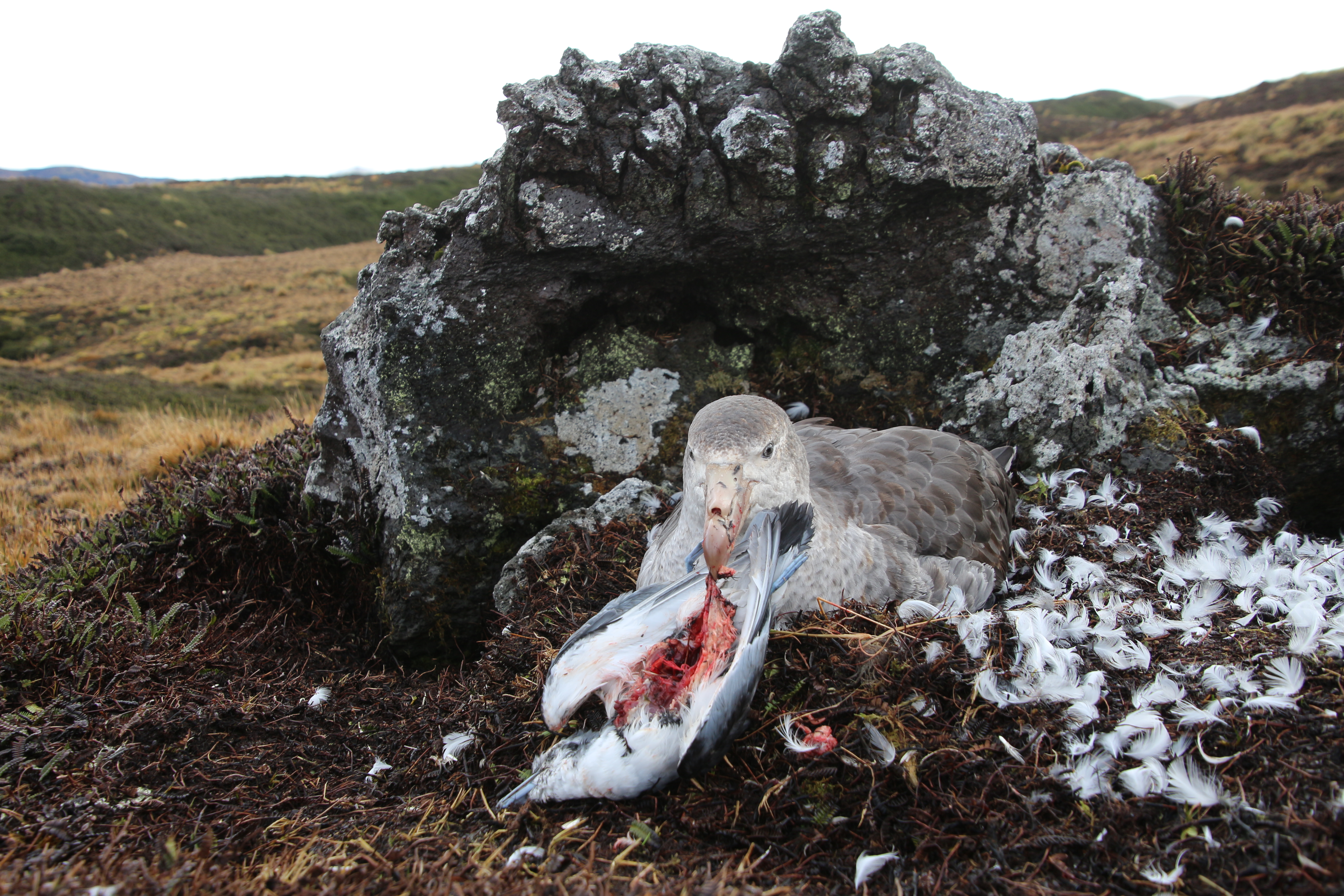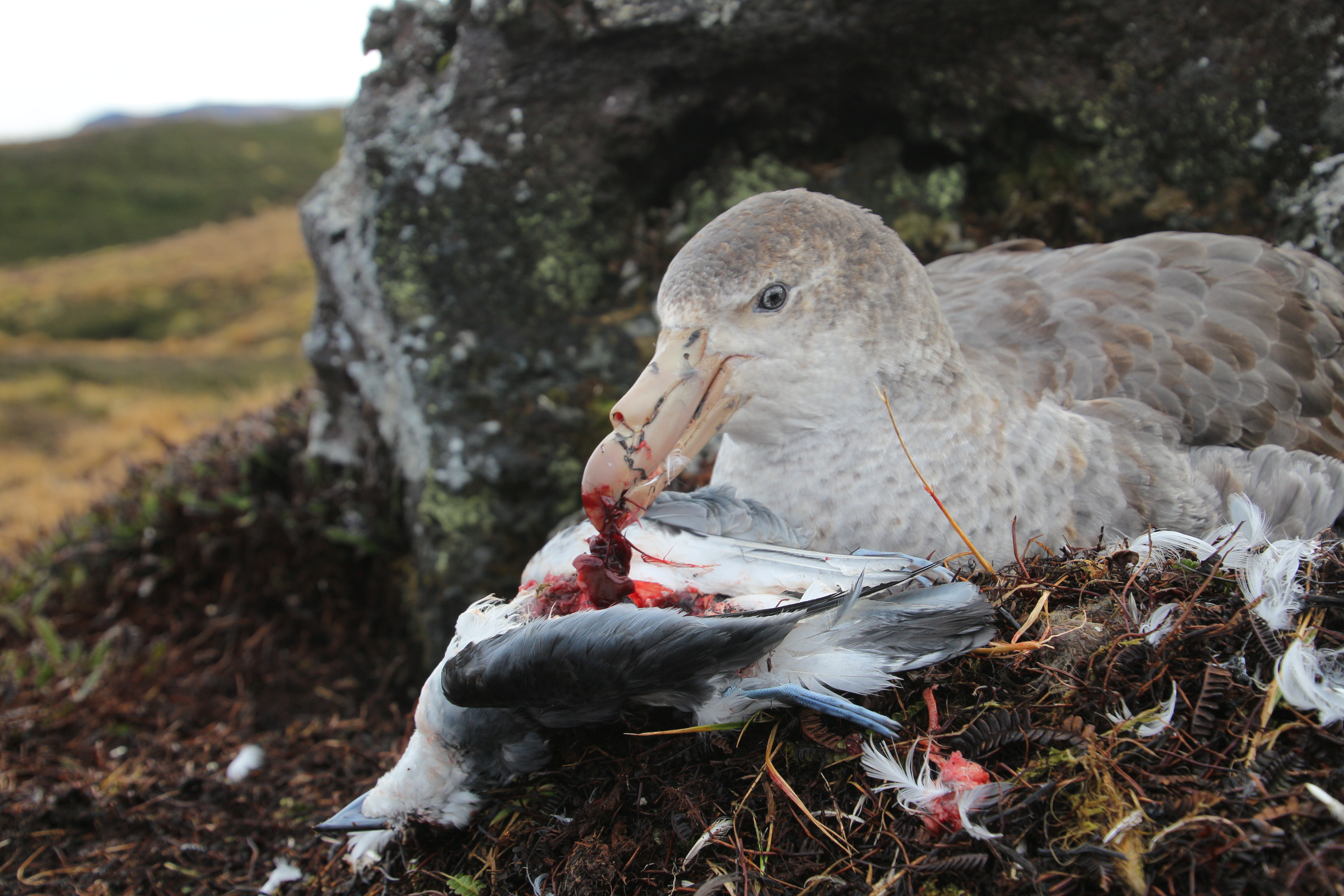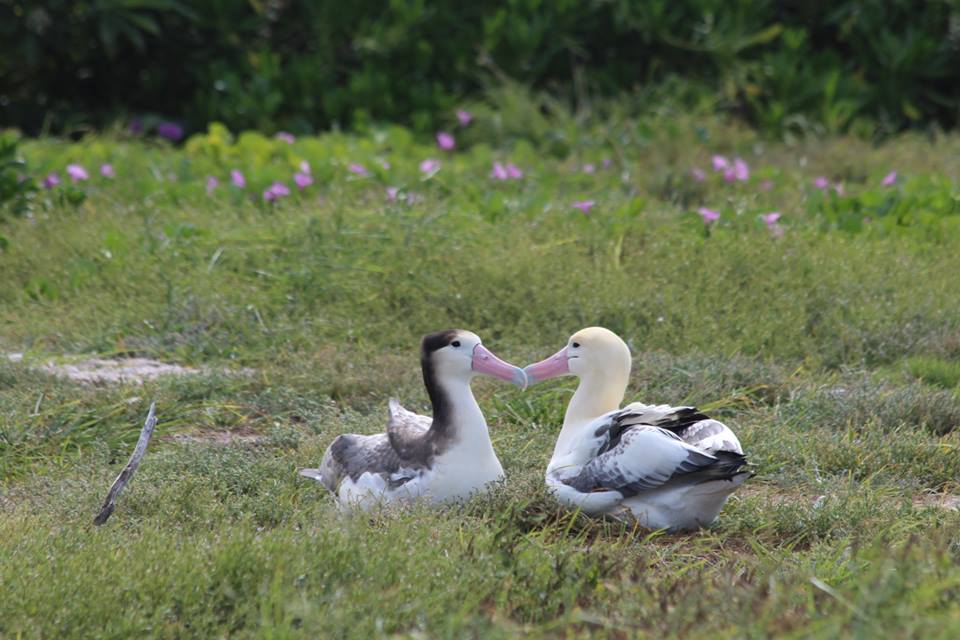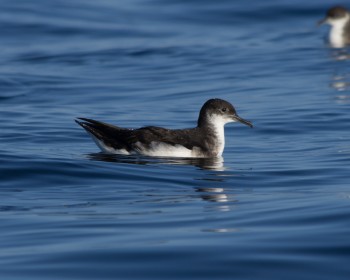UPDATE:
The Sessional Committee of the Scientific Council (ScC-SC4) of the Convention on Migratory Species (CMS) has endorsed the proposal of New Zealand, Australia and Chile to list the Antipodean Albatross Diomedea antipodensis on Appendix 1 of the Convention. A proposal for Concerted Action on this species was also endorsed by the ScC-SC. Both the proposals for listing (UNEP/CMS/COP13/Doc.27.1.7) and for Concerted Action (UNEP/CMS/COP13/Doc.28.2.12) will now be considered by COP13, to be held in India in February 2020.
************************************
The Fourth Meeting of the Sessional Committee of the Scientific Council (ScC-SC4) of the Convention on Migratory Species (CMS) will be held from 12 to 15 November 2019 at the UNEP/CMS Secretariat premises in Bonn, Germany.
“ScC-SC4 being the last meeting of the Scientific Council before the 13th Meeting of the Conference of the Parties to CMS (COP13), its main objective will be to provide advice on scientific and technical matters to the COP”. The 13th Meeting will be held in Gandhinagar, India over 17 - 22 February 2020.
The Governments of New Zealand, Australia and Chile have submitted a proposal (UNEP/CMS/COP13/Doc.27.1.7; also available in French and Spanish) to COP13 for the inclusion of the ACAP-listed and globally Endangered Antipodean Albatross Diomedea antipodensis on Appendix I of the CMS. The species is a breeding endemic of New Zealand but migrates outside the breeding season to the waters of both Australia and Chile. The proposal will be first considered at ScC-SC4 so that a recommendation on the species’ inclusion can be made at COP13. It describes four major threats faced by the two recognized subspecies of the albatross. These are given in order of importance as fisheries bycatch, predation by introduced mammals, plastic pollution, and climate change. The proposal considers the sudden and rapid population decline of the Antipodean Albatross since 2004 as unprecedented amongst the world’s 22 species of albatrosses. An Appendix I listing is therefore considered justified to raise the level of concern and international awareness of the plight of the species.
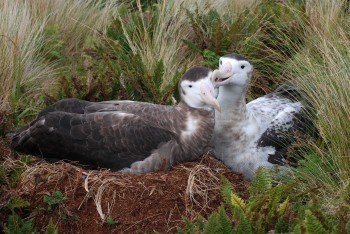
An Antipodean Albatross pair on Antipodes Island, photograph by Erica Sommer
The species is currently identified as a species of special concern by ACAP. It is already listed on Appendix II of CMS. Appendix I status, if approved for a Concerted Action in India in February at COP13 has the following required actions as set out in the Convention Text:
“Parties that are Range States of a migratory species listed in Appendix I shall endeavour:
- a) to conserve and, where feasible and appropriate, restore those habitats of the species which are of importance in removing the species from danger of extinction;
- b) to prevent, remove, compensate for or minimize, as appropriate, the adverse effects of activities or obstacles that seriously impede or prevent the migration of the species; and
- c) to the extent feasible and appropriate, to prevent, reduce or control factors that are endangering or are likely to further endanger the species, including strictly controlling the introduction of, or controlling or eliminating, already introduced exotic species.”
Anticipated benefits of Appendix I listing include increased cooperation between Range States, Regional Fisheries Management Organizations (RFMOs), ACAP, non-governmental organisations and other concerned parties to improve the uptake and effectiveness of bycatch mitigation use, including compliance monitoring and bycatch data collection, and to reduce the capture of Antipodean Albatrosses in longline fisheries. “It may also incentivise development of advocacy and educational material to fishers and fishing companies about the threat status of this bird. These measures should assist in reducing the high mortality rate currently driving the decline of the species. In particular, bycatch reduction over the foraging range of female Diomedea antipodensis antipodensis will address the most urgent conservation issue regarding the extremely high mortality rate amongst these birds.” [adapted from UNEP/CMS/COP13/Doc.27.1.7].
With thanks to Barry Baker.
John Cooper, ACAP Information Officer, 06 November 2019, updated 16 November 2019

 English
English  Français
Français  Español
Español 
